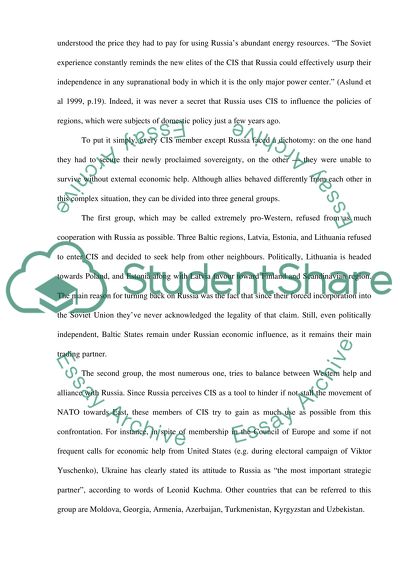Cite this document
(“Commonwealth of Independent States Essay Example | Topics and Well Written Essays - 2000 words”, n.d.)
Retrieved de https://studentshare.org/politics/1517331-commonwealth-of-independent-states
Retrieved de https://studentshare.org/politics/1517331-commonwealth-of-independent-states
(Commonwealth of Independent States Essay Example | Topics and Well Written Essays - 2000 Words)
https://studentshare.org/politics/1517331-commonwealth-of-independent-states.
https://studentshare.org/politics/1517331-commonwealth-of-independent-states.
“Commonwealth of Independent States Essay Example | Topics and Well Written Essays - 2000 Words”, n.d. https://studentshare.org/politics/1517331-commonwealth-of-independent-states.


